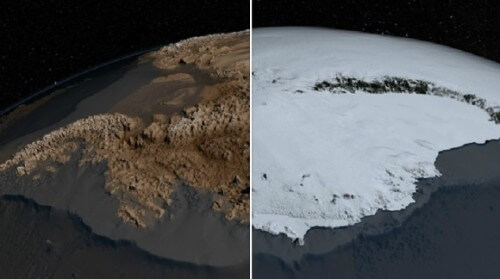The findings of the study, carried out by Dr. Roi Granot from the Department of Geological and Environmental Sciences at Ben-Gurion University, which disproves the hypothesis that unification occurred much earlier, have important implications for the understanding of the movements around the Pacific Ocean - among other things, regarding the uplift of the New Zealand Alps, On the movements along the San Andreas in California

A new study, published this week in the journal Nature Communications, carried out by Dr. Roi Granot from the Department of Geological and Environmental Sciences at Ben-Gurion University of the Negev in collaboration with a researcher from the French Geophysical Institute (Jerome Diment), shows that the two tectonic plates that built Antarctica for about two hundred million years merged into one panel at a much later stage than previously thought. The results of the research have important implications for the understanding of the movements around the Pacific Ocean - the rise of the New Zealand Alps, the movements along the San Andreas in California, and more.
In the last two hundred million years, Antarctica was crossed by a very long rift along which tectonic movements took place between the East and West Antarctic plates. These movements caused the creation of one of the longest mountain chains in the world (the Trans-Antarctic Mountains), the eruptions of hundreds of volcanoes, most of which erupted under the ice shelves, and the shaping of the subglacial topography. These movements have a great significance on the rate of heat dissipation of the rocks and the rates of movement and melting of the glaciers. Dr. Garnot: "We know from satellite data that today there are no movements inside Antarctica - the continent is tectonically frozen - and the question that has been unsolved so far is how the plates moved relative to each other in the last tens of millions of years and when did the fission stop working?"
The new data were collected during two voyages on a French icebreaker, in which the researchers collected geophysical data that allowed them to date the ocean floor and calculate the movements between the Antarctic and Australian plates. The results show that Antarctica united into one plate about 11 million years ago. Since Antarctica connects the Pacific Plate to the rest of the world, these results of the study, as mentioned, have important consequences for the understanding of the movements around the Pacific Ocean - the uplift of the New Zealand Alps, the movements along the San Andreas in California, and more.
More of the topic in Hayadan:
